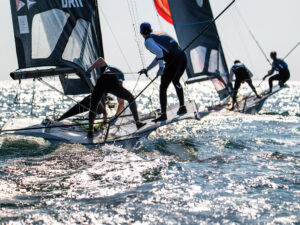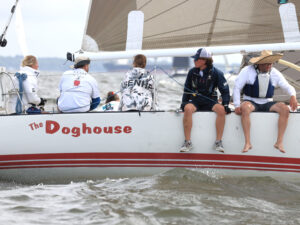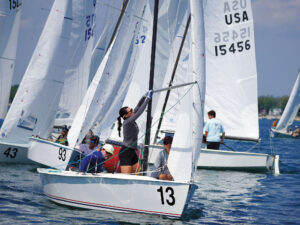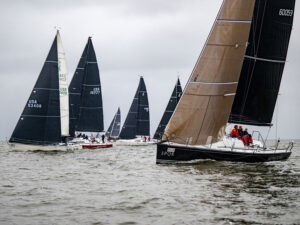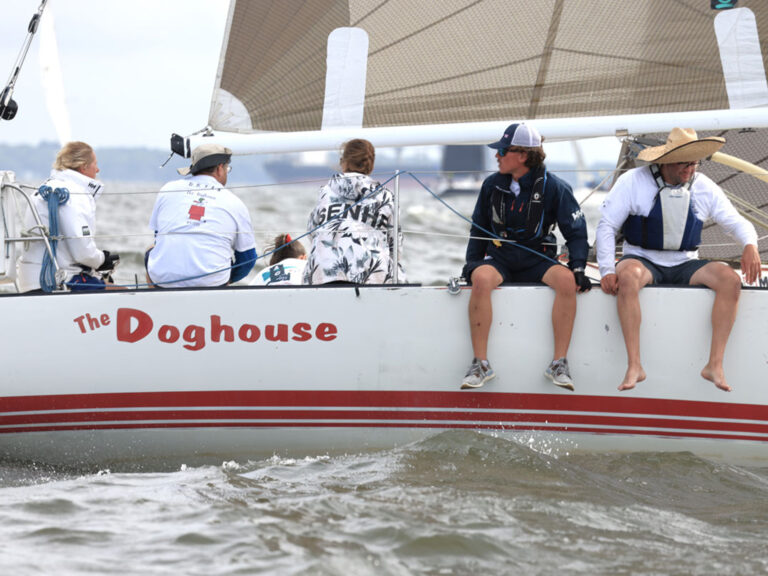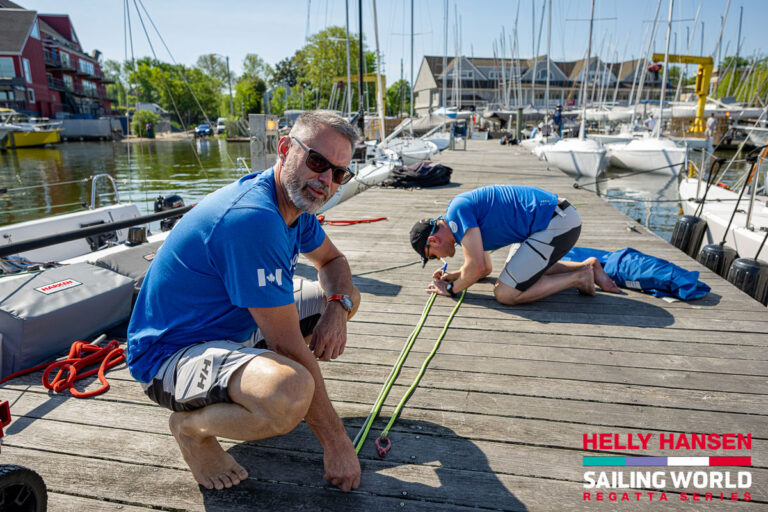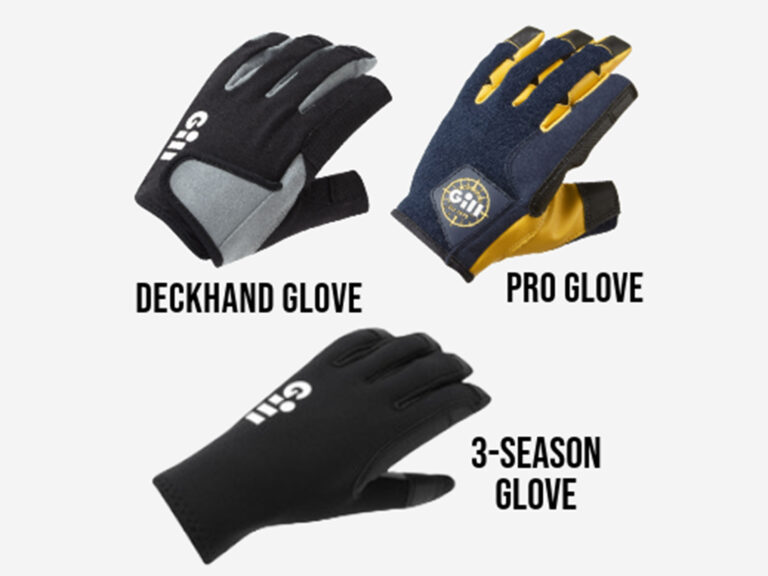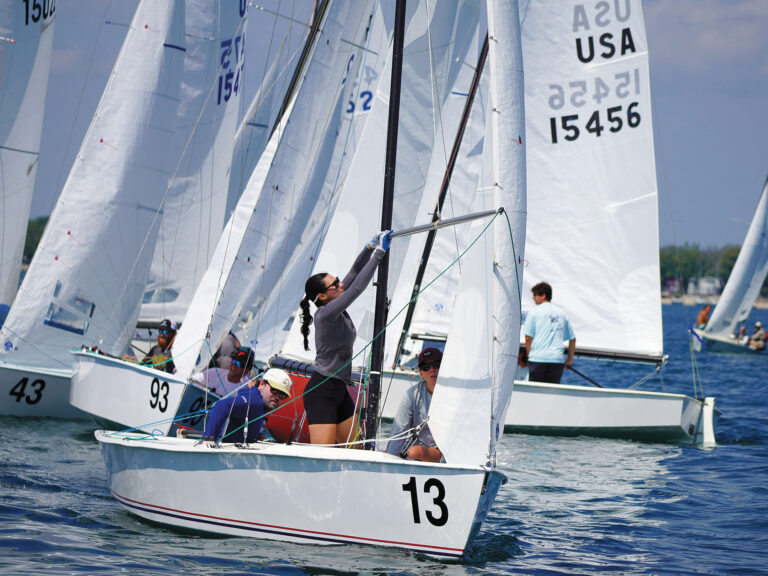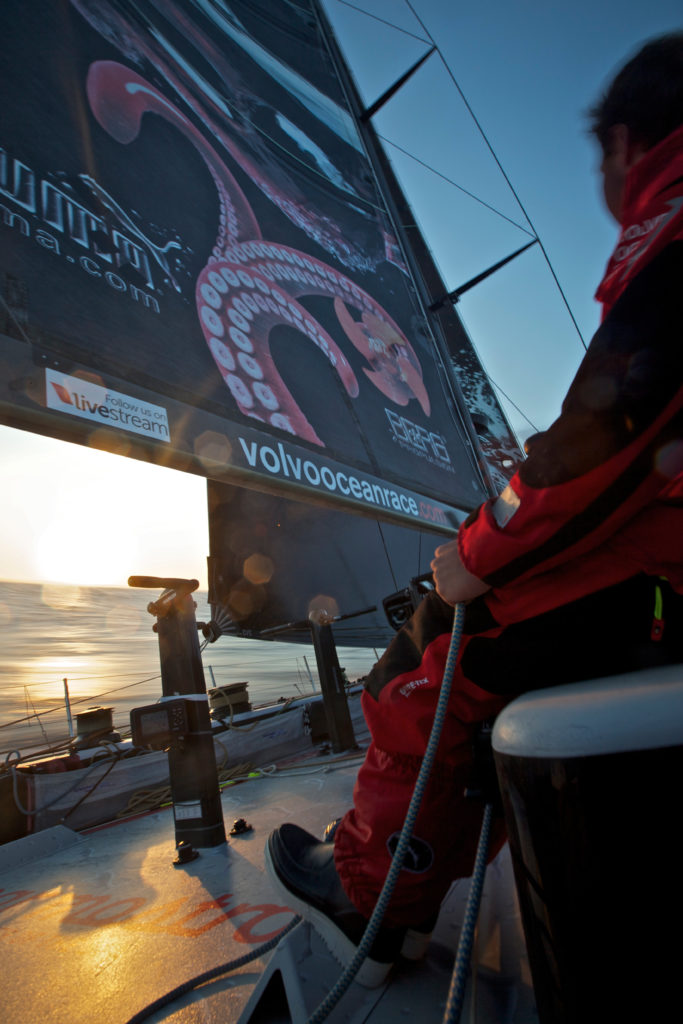
mar mostro’s sails
With much discussion of late regarding equipment and hull failures in the Volvo Ocean Race’s fleet of VO70s, one point of discussion not making the rounds is the sails. Whereas in the previous edition it seemed sewing machines were clattering away across the fleet the entire race, mending delaminating mainsails and piecing together shredded reaching sails. For the most part, onboard sail lofts have been quiet this time around. When PUMA Ocean Racing’s Ken Read ducked into the Sailing World offices this morning (he’s home on break in Newport, R.I., before heading back to Brazil for the in-port races next week), I pressed him on the topic.
You’re bragging that you’re five legs into the race and still flying your first mainsail; how’s that possible?
This is a story that needs to be told. With my North Sails hat off, speaking strictly from a sailor and customer’s point of view, 3Di is a bigger breakthrough than when 3DL came along. It’s unbelievable how solid these things are. It’s incredible.
Going the 3Di route was a bit of a flyer, but last time with the film sails, the films broke down too quickly. With only 17 sails allowed for the entire race, we felt we had to take the chance that durability would play a bigger role in this race. Every sail on the boat is 3Di except our downwind sail, the A5, which is Cuben Fiber. The race rules don’t allow carbon in the sails because if affects the satellite communications. If we could, the sails would have carbon and they’d be even stronger.
When North started making the 3Di sails they were making them 100 percent aramid or 100 percent carbon, but they were brittle and breaking, so now it’s a mix of aramid and Dyneema (Spectra) for durability and shape holding. Dyneema has elasticity, to a point, so it has some stretch, but aramid does not, so the experiment has been about the blend you end up with: how much aramid can you get away with and not break.
I don’t know where we stand on the aramid-to-Dyneema blend compared to others in the fleet, but I suspect we might have the most aramid, and because of this, we’ve had only one failure the entire race. It was on our J2 (jib), which happened when the tack strop blew up—it wasn’t the sail that failed. The jib took off up to the top of the mast at 180 miles an hour and tore itself in half. The Dyneema/aramid blend has its initial creep and then literally locks in shape. It doesn’t get that film-shrinking look where it starts looking thin at the headstay or the mast. There’s no draft-aft movement over time. Our first mainsail has so many high-load, upwind miles, and it’s been swimming in the middle of the North Atlantic, but we’re still perfectly happy to use it. There are no signs of major shape changes or manufacturing issues.
In the previous edition of the race UV damage was a major issue with the aramid sails; why are we not seeing this now?
There are so many layers in this thin-ply-technology, and only the outside layers are dyed black, and that for sure is helping. In the last race we were lucky; we had the only sails that were dyed, or had different color films, and we had very few lamination issues. We chose red sails, and for whatever reason those color films ended up protecting the aramid fibers better than clear films. This time around the 3Di process lends itself to UV protection. There are so many more layers, and the protection of each layer is accomplished with one simple outside layer being colored.
**Re-cutting is a big part getting a sail through an entire race, and especially important with the limited inventory; are these sails easy to nip and tuck? **
Unlike film sails, you can put a band-aid over any re-cut, sew the edges, and you’re ready to go. Our first main has had three re-cuts—minor shape changes and tweaks, and has not had any more than a half-millimeter of shape creep. The material lends itself to keep making the sail better. That’s long-term durability. For the average sailor I could see it almost like your car—how you bring it in at a certain mileage for service. With these sails, a winter nip and tuck is all you’ll need to get another season out of it.
But isn’t that a bad thing for North . . . forced obsolescence and all?
No doubt about it. This could make North Sails less money. I’m their biggest customer in North America, and as their best customer I see 3Di as the biggest value we’ve ever had. We didn’t even build our pre-race sails that we could have built; we just ran out of things to try because the sails simply lasted too long. From a North Sails point of view, they’ll have make it up in volume because the sails are a massive value added compared to sails in the past.
Should it—or could it—replace 3DL altogether?
It will create a different tier and price range. 3Di is not cheap, but when you do the math and figure out how much longer they last, the price is worthwhile. That’s my feelings so far—again as a customer.
Easy to repair at sea?
We bring 300-millimeter-wide bands of the stuff. After the J2 split in half it was up and flying 24 hours later with a massive band across the split. We took some 5200, wiped it on the sail, stuck the two pieces as close together as possible, took a band of 3Di across the 5200, let it sit there for two hours, and then, 12 hours later, put it through the sewing machine to tack down the edges (so patch doesn’t peel away). After that, we carried it for four days, upwind in 27-knots true and flying off waves. It’s unbelievable, really.
And what about chafe?
One interesting part of the 3Di process is that the patches and batten pockets are internal, and as long as the [Dyneema] chafe patches are lined up correctly, we’ve had no problems. We have patches in our Code Zeros now because they slat against the rig and the spreaders and get poked through. But as soon as you patch it up, there’s no problem.
Does it lend itself well to roller-furling units?
Definitely. Our genoa staysail, J4, fractional, and masthead Zeros are all on furlers. The inherent stiffness of the sail actually lends itself to the roller-furling application better. When it’s new, and on hanks, it’s a bear to get into the bag—it’s just stiff, especially when it’s cold. On the furler, it rolls up solid as rock.
**It may be durable, but a criticism of the 3Di is its weight. How do you balance the two traits in a 39,000-mile race? **
We’re about 7 percent heavier than the 3DL sails we used last time, but that’s mainly because of risk aversion. I don’t know what the rest are doing, but we did what we thought was comfortable. Maybe we erred on the side of caution. Maybe Camper went lighter. You can tell because when their sail bags are on deck they’re much smaller than ours. But I wouldn’t be surprised if they went too light. Which, in a way, is good for North because they need to see where the failure point might be for mainstream customers.
You say this is trickle-down stuff; what’s in it for me?
I honestly think 3Di has now gone from being an experimental product to the real-deal mainstream product for the cruisers to the hardcore racers. It boils down to one simple thing: value. It’s probably not good for North Sails that the sails last as long as they do, but the irony is that sailmaking companies have always harped durability, when in fact, sails have never been close to being durable enough. Sails are expensive, and they should last longer. It’s been a real eye opener for all of us. We all kind of wished for something like this, and sure enough, it’s been a very pleasant surprise.
In fact, I was talking to Dan Neri (of North Sails) the other day, and he reminded me that in the last race, right about now, he was on a flight to Brazil, just to appease all the teams dealing with issues. What he figured out is that the new route was twice as bad as the old route as far as UV is concerned because of all the equatorial sailing we were doing. With so much time in the sun, the film sails were breaking down, something no one considered before the race. But this time everyone has.
So where’s the protection coming from?
The UV protection is just built into the sail. With a 3DL you have windows on both sides and strength materials between; there’s nothing giving the aramid bundles any UV protection. The 3Di has a million different strength layers running in crazy directions, but the outside tapes are colored and they’re essentially a UV blocker. Whether it’s meant to be a blocker, or the colors are doing the blocking, I’m not sure, but UV damage is not an issue this time.
Interview by Dave Reed (4/12/12)

